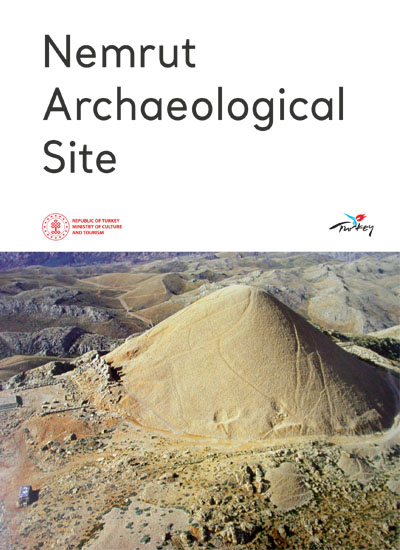Mount Nemrut Archaeological Site is a UNESCO World Heritage Site. It is situated on a hill overlooking the Euphrates River passages and the plain at an altitude of 2150 meters on the Eastern Taurus mountain range. The site features a tumulus, which was formed with the accumulation of crushed rocks on the monumental tomb built for King Antiochus I of the Commagene. A fire altar, Persian-Macedonian style giant sculptures, and relief stelae were constructed on the three terraces around the tumulus. Commagene is the unique goddess of fertility in the country of Commagene. She is depicted wearing a diadem decorated with fruits on her head and is the only goddess known in the Commagene pantheon. She is believed to be related to the goddesses Hera Teleia mentioned in the inscriptions at Arsameia Nymphaios and Argandene in the Arsamia Euphrates. The Eastern Terrace is one of the notable features of the site. This terrace is the most magnificent and well-preserved of the three. It features statues of the king, goddesses, and gods seated in rows on 10-meter-high thrones. The mother goddess of the country, Commagene, is located near Antiochus I's statue, with the chief god Zeus-Orosmasdes in the middle, Apollo-Mithras nearby, and the Herakles-Artagnes statue on the far right. Guardian eagle and lion statues are symmetrically placed on both sides. The inscription (Nomos) behind the thrones consists of 223 lines. On the western terrace, similar to the other terrace, there are thrones, statues, and reliefs of King Antiochus I of the Commagene shaking hands with deities. Additionally, there are relief stelae of Macedonian kings. A lion horoscope relief about astrology is also present. The date of 7 July 62 BC can be read from the moon and stars on the lion relief. This is the date when King Antiochus I ascended the throne. Additionally, there are four reliefs of Persian ancestors of King Antiochus I. The Northern Terrace was constructed as a ceremonial road between the east and west terraces.
MOUNT NEMRUT ARCHAEOLOGICAL SITE


